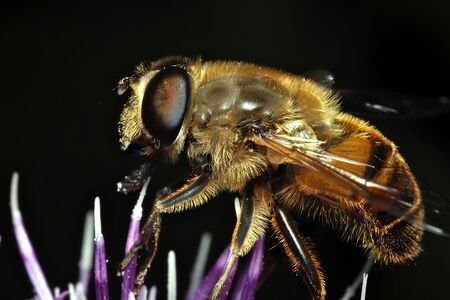
Good Natured: Rat-Tailed Maggots
As a little kid, I was really lucky. I had parents who read to me every night at bedtime.
Thanks to these literary forays, I early on gained a healthy respect for witches who lived in cottages in the woods; for bears, especially those who lived in threes; and for big bad wolves. I also remember feeling really, really bad for ugly ducklings.
But now, as a more or less grownup, I look back on those tales with mixed feelings. I've walked in a lot of woods and have yet to find a cottage I can eat, let alone a witch who wants to fatten me up (more). I've also learned it's best to steer clear of bear dens, and that wolves are far from bad in the ecological scheme of things.
Yet when it comes to ugly ducklings, I'm stumped. Given that Hans Christian Andersen was Danish, his title character likely was Cygnus olor, the mute swan. These birds are somewhat invasive here in the United States but an important part of the landscape in Europe. Their offspring, or cygnets, are certainly larger than baby ducks. But ugly?
I dunno. They look pretty cute to me.
I understand that the story closely parallels the author's own feelings of rejection as a child, and how it's important to not judge based on appearances. But, gosh, nature provides so many other examples of young, “ugly" creatures that develop into enchanting and beneficial adults. Caterpillars come to mind first, with beetle grubs coming in a close second. And then of course there's rat-tailed maggots.
It would necessitate a title change (“The Ugly Larva," perhaps) but a book about these wee creatures could serve a dual purpose. Besides enlightening folks as to the existence of these often-overlooked organisms, a story about their life cycle could detail their struggles while also explaining their role in local ecosystems. The pupation chapter could depict the wondrous changes that occur, and the finale could describe the debut of a handsome hover fly—an unsung hero in the world of pollination.
Let's start with the name: rat-tailed maggot. Talk about a double whammy! Rats suffer from a poor public image that starts with people's reactions to their naked tails. But then the word maggot gets tacked on too.
When was the last time you heard someone say, “Ooh, a maggot! What a delight!"
A maggot though is actually just an immature fly. And while many fly species (we have over 17,000 in North America alone) are perceived as unsavory, the truth is they all have a job to do. And some, like those that develop from rat-tailed maggots, bring a good deal of value to the communities in which they live.
You've probably seen the mature form of a rat-tailed maggot without even realizing it. You may, in fact, have mistaken it for a bee. As adults, rat-tailed maggots are known as Eristalini hover flies. With abdomens boldly striped in yellow-orange and black, and with an appetite for pollen and nectar, they not only look like bees, they act like them too. As they flit from flower to flower, pollen sticks to the hairs on their thorax and abdomen and they pollinate as they go.
(Note: Over 800 species of hover flies live in North America and together they make up the family Syrphidae. While all rat-tailed maggots develop into hover flies, not all hover flies have a rat-tailed larval phase. Got it? Hope so!)
I had occasion to read about rat-tailed maggots just the other day, not in a book of fairy tales but rather in a text message. My friends Kim and Sarah were attending an interpretive outing sponsored by The Conservation Foundation (headquartered in Naperville, IL) when a fabulous photo opportunity arose.
The program leader, Renae—another friend and former coworker here at the Park District-- stopped the group by a quiet pond that, as Kim said, “had a lot of detritus." Never one to pass up a teachable moment, Renae dipped into the water and pulled out, among other things, a rat-tailed maggot.
Sarah and Kim, both accomplished naturalists, had never seen such a creature, and knew I'd be interested in it too. Fairly good-sized, as larvae go, its body measured about ¾ in. while its namesake tail was more than twice that long.
That “tail," it turns out, is also their lifeline. Rat-tailed maggots' ecological niche, or job, is to feed on bacteria and organic matter, typically in stagnant water. In that sort of environment, dissolved oxygen is usually quite low. In order to get the oxygen they need, these larvae push their tail—which is called a siphon, and functions like a snorkel—above the water's surface to take in air.
After about 2 ½ weeks in this immature phase, the larvae leave the water and pupate, and 10 days later a beautiful pollinator emerges. Like the “duckling" that turns into a swan, the insect leaves its old life behind and starts anew.
I'm not sure at what level birds perceive contentment, and I'm even less sure of a fly's ability to feel joy. But the next time you see an Eristalinid visiting flowers, it wouldn't hurt to recall the words of Herre Andersen's swan—paraphrased, of course: “I never dreamed of such happiness as this, while I was an ugly [larva]."
Pam Otto is the outreach ambassador for the St. Charles Park District. She can be reached at potto@stcparks.org.

